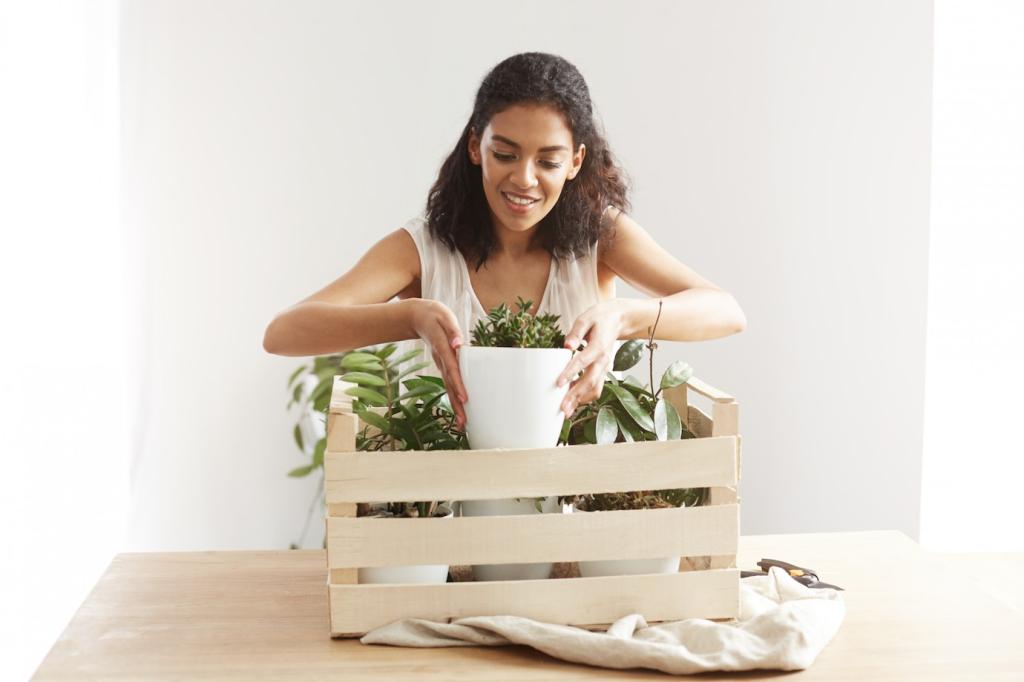Indoor Plant Care Tips for a Greener Lifestyle
Discover the essentials of nurturing indoor plants and cultivating a greener, more vibrant environment in your living space. Embracing indoor plants not only elevates the aesthetics of your home but also promotes cleaner air and a more calming atmosphere. This guide shares practical insights designed to help you foster thriving houseplants and enjoy the many benefits they bring, regardless of your gardening expertise or the size of your indoor sanctuary.

Creating the Ideal Environment
Lighting is one of the most critical factors affecting the health of indoor plants. Most houseplants derive their energy from sunlight, but direct sun can scorch delicate leaves, while too little light can stunt growth or cause leaf discoloration. When positioning your plants, observe the intensity and duration of natural light throughout the day. Bright, indirect light is ideal for many species, though some tolerate low-light conditions. Artificial grow lights can also supplement or replace natural light in areas with limited sun exposure. Monitoring your plants for subtle changes—like leaf stretching or fading color—will give you clues about their lighting needs, allowing you to adjust placement as required for optimal growth.

The Art of Knowing When to Water
Learning to identify precisely when your plant needs water is a foundational skill for all indoor gardeners. Overwatering is a common error, often leading to soggy soil, yellowing leaves, and eventual root decay. Conversely, underwatering can stress plants, causing drooping or dry, brittle foliage. Factors such as plant species, pot size, light exposure, and room temperature all influence how quickly soil dries out. It's best to check soil moisture with your fingertip, a chopstick, or a moisture meter before adding water. By tuning into these subtle signals and adjusting your routine accordingly, you'll help your plants thrive and prevent common pitfalls.
Proper Watering Methods
How you water your plants impacts their health as much as how often. Always use room-temperature water to avoid shocking the roots. Pour water slowly and evenly, ensuring the entire root zone gets moist. Allow excess water to drain out of the pot’s bottom to prevent stagnant pools around roots. For some plants, bottom watering—placing the pot in a dish of water and allowing it to soak up—can be beneficial, especially for those susceptible to fungal issues on the leaves. Developing consistent methods tailored to individual plant preferences will reduce the risks of disease and encourage healthy, balanced growth.
Recognizing Signs of Water Stress
Early detection of watering issues enables you to rectify problems before they escalate. Symptoms of overwatering include yellow, limp, or dropping leaves and an unpleasant, musty odor from the soil. Underwatered plants typically exhibit crispy, brown-edged leaves and an overall droopy posture. Mold or fungus gnats in the potting mix may also signal excessive moisture levels. Regularly inspecting your plants and understanding their responses to your watering habits allows you to intervene promptly, making tailored adjustments that promote lasting well-being and vigor.
Previous slide
Next slide
Feeding and Fertilizing Essentials
01
Understanding Nutrient Needs
Plants obtain nutrients from soil, but over time, the limited resources within a pot can become depleted. Primary nutrients like nitrogen, phosphorus, and potassium each play specific roles in foliage growth, root development, and flowering. Additionally, micronutrients are essential for overall resistance to disease and environmental stress. Awareness of your plant’s nutritional requirements, which often differ between species and even within growth phases, is key to sustaining their health. Ensuring a well-balanced, high-quality potting mix and supplementing as needed will offer a solid foundation throughout the plant’s lifecycle.
02
Selecting the Right Fertilizer
With countless fertilizers on the market, choosing the best one for your indoor plants can feel overwhelming. The main options include liquid, granular, and slow-release formulations. Liquid fertilizers offer precise control and are ideal for rapid intervention, while slow-release granules can simplify maintenance for busy lifestyles. Select a product based on your plants’ unique needs—flowering plants may require a formula with higher phosphorus, while leafy greens benefit from nitrogen-rich blends. Avoid over-fertilization by adhering strictly to the recommended amounts, as an excess can lead to leaf burn or salt buildup in the potting soil.
03
Identifying Signs of Over or Under-Fertilizing
Closely monitoring how your plants respond to feeding is crucial. Over-fertilized plants often develop brown leaf tips, stunted growth, and even white, crusty deposits on the soil surface. Under-fertilized plants may become pale, produce few new leaves, and appear generally weak or leggy. Corrections are straightforward once the problem is identified: flush the soil with water to remove excess nutrients, or gradually introduce an appropriate fertilizer if deficiencies emerge. As you refine your approach, your plants will develop robust, colorful foliage that stands as a testament to effective, balanced nutrition.
